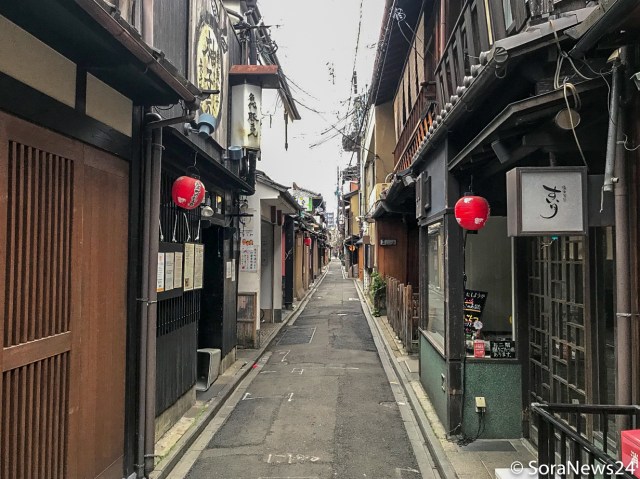
Experience a very different side to the city as part of the “Cherry Blossoms in the Morning” promotion.
If you ask travellers where they most want to see the cherry blossoms in Japan, many of them will name Kyoto as their dream hanami flower-viewing destination.
However, the only problem with visiting Kyoto is having to deal with everyone else who wants to visit it too, as the city has become notorious for being one of the most crowded sightseeing spots in the country.
In fact, it’s become so congested and inconvenient that Japanese travellers are now avoiding Kyoto as a travel destination. This is a problem that Central Japan Railway Company is attempting to alleviate, though, with a new “Cherry Blossoms in the Morning” campaign, which seeks to encourage visitors to start exploring early in order to avoid the crowds.
Our reporter Ikuna Kamezawa decided to try out one of their suggested self-guided early-morning tours of the city, arriving at Kyoto Station at the crack of dawn at 6:30 a.m. on a Sunday.
Despite it being a weekend, there was hardly anyone else around, which made travelling on public transport a breeze. Ikuna hopped on the Karasuma Line, and took a three-minute ride to Shijo Station, where she planned to spend some time exploring Gion and its surrounding areas, which are usually crowded with throngs of tourists.
Ikuna used the underground passageway to walk from Shijo Station to Karasuma Station, where she took the steps up to the street and headed out to one of the city’s most famous tourist spots: Nishiki Market.
Nishiki Market is a narrow indoor market that contains over 100 shops and restaurants. With a wide variety of produce, local specialties, and food-related goods available to the public here, the market has become known as “Kyoto’s Kitchen“, and its lively, bustling atmosphere has made it one of the most famous places in the city.
However, when Ikuna arrived, it was like a ghost town. She’d never seen the market this quiet and deserted before.
It was hard to believe Nishiki Market could look and feel so different just hours before opening, when hordes of people would start descending upon the area. This gave her a unique insight into how local business owners usually start their day, with several stores opening their shutters and shedding light out onto the narrow walkway.
▼ Looking left and right along the market, there wasn’t a single person walking around.
Ikuna’s stomach began to rumble, reminding her that she needed to find a place for breakfast. After walking along for a bit, she found a place that looked open, but after checking it out, it actually opened at 8:30 a.m., and by her watch, it wasn’t even 7:00 a.m.
Walking through the arcade, it soon became clear that the only breakfast option here was going to be McDonald’s. However, Ikuna drew the line and refused to have McDonald’s for breakfast in the ancient city of Kyoto, especially in a place known as “Kyoto’s Kitchen”.
Ikuna decide to leave Nishiki Market and venture out to the nearby Shinkyogoku Shopping Arcade, where she found a few big cafe chain outlets open for breakfast. This wasn’t the type of breakfast she had in mind for her Kyoto experience, so she continued to walk along the arcade for a bit, and that’s when the heady aroma of incense began wafting towards her. Ikuna followed her nose to a small exit leading away from the indoor market.
▼ She stepped out here and found herself at Saikoji Temple.
With the stillness and quietness of her surroundings, the early morning temple visit was extra special, so Ikuna decided to go on a bit of a meander, seeking out some other small temples to visit. Seishinin had a beautiful old entrance, sandwiched in between two modern storefronts.
▼ Seiganji was another beautiful find in the area.
▼ Chugenji was hidden out of sight, like a secret temple behind a busy street.
Ikuna then arrived at another one of Kyoto’s most famous tourist sites: Pontocho.
This narrow alley is packed with restaurants, and usually packed with tourists who come here to soak up the traditional atmosphere. However, during her early morning visit, Ikuna had the entire place to herself, and she took the opportunity to snap some photos so she could share the unusual sight with her friends when she got home.
▼ Seeing Pontocho like this was a first for Ikuna.
Ikuna then headed one block east, to explore the Kamogawa River area which runs parallel to Pontocho. The riverside was also empty, except for a couple of people who were doing a great job of keeping the area neat and clean by picking up trash.
Looking at her watch, Ikuna found that the time was now 8:30 a.m., so she headed over to the Gion area on the other side of the river, where she found more people had started to appear on the streets. She even walked by two young women, who were greeting a middle-aged woman with “Ohayo san dosu”, which is a “good morning” greeting in the Kansai dialect, often used by geisha and maiko. While they were dressed in western clothes, Ikuna couldn’t help but wonder if she might’ve chanced upon a couple of young geisha in training.
While she was yet to find a place for breakfast, Ikuna continued on to another famous Kyoto site: Yasaka Shrine.
The grounds of the shrine are usually crowded with tourists, but this morning Ikuna found the place was quiet, with only a few visitors and a newly married couple taking photos in traditional attire.
Ikuna then made her way to another renowned site, arriving at her final destination of Kiyomizudera at 9:30 a.m.
She still hadn’t had anything to eat, though, and Ikuna found that was the one downfall of the “Cherry Blossoms in the Morning” campaign. While the official campaign site provides information on recommended sites to visit in the morning, it fails to provide any breakfast options for travellers.
▼ But really, who cares about breakfast when you get to see traditional streets like this, before all the crowds arrive?
Still, most tourists will probably be able to have breakfast at their accommodation before setting out for the day, and others will be happy to have something from the convenience store or a fast food or cafe chain. Ikuna had been hoping to stumble upon somewhere that served a Japanese-style breakfast before 8:30 a.m., but instead she made do with a matcha ice cream at 9:30 a.m.
It was now 10 a.m. and Ikuna had already done so much that she was ready to finish her sightseeing excursion, just as others were beginning theirs.
She headed back to the station via Nishiki Market, which already looked entirely different to the market she’d encountered earlier that morning.
Ikuna really loved her early morning walking tour of Kyoto and highly recommends it to everyone visiting the area. There are a number of suggested itineraries on the official campaign site, which include information about shrines and temple that are open 24 hours, like Fushimi Inari Taisha and Yasui Konpiragu Shrine, which can be visited as early or as late in the day as you like.
While Ikuna’s 10 March visit was a little early for the blooming of the Somei Yoshino sakura, she was still able to make some exciting discoveries that she mightn’t otherwise have if she had to contend with crowds. Plus, she was able to experience the city in a whole new light, which made her fall in love with Kyoto all over again.
As the crowds will be even more intense during cherry blossom season, it really is worth it to get out early and explore, especially if you plan to visit some of the best hanami spots in the region.
Photos © SoraNews24
● Want to hear about SoraNews24’s latest articles as soon as they’re published? Follow us on Facebook and Twitter!

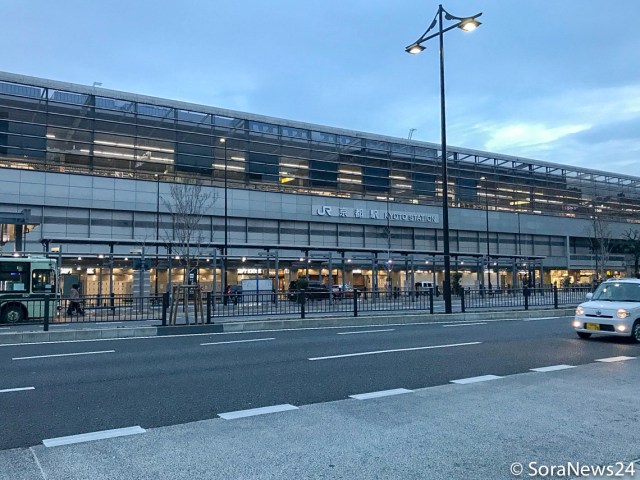
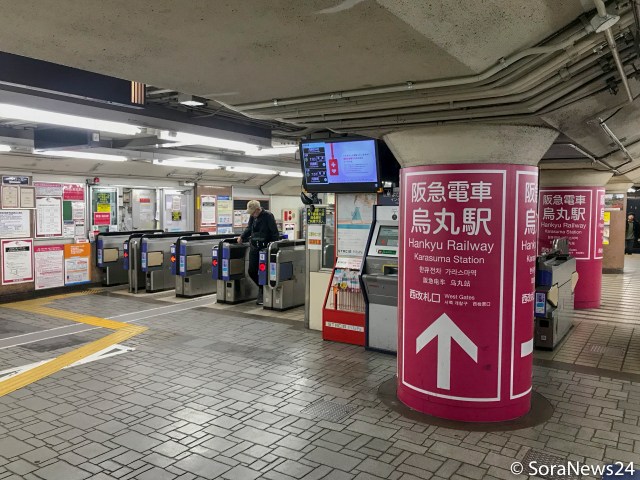
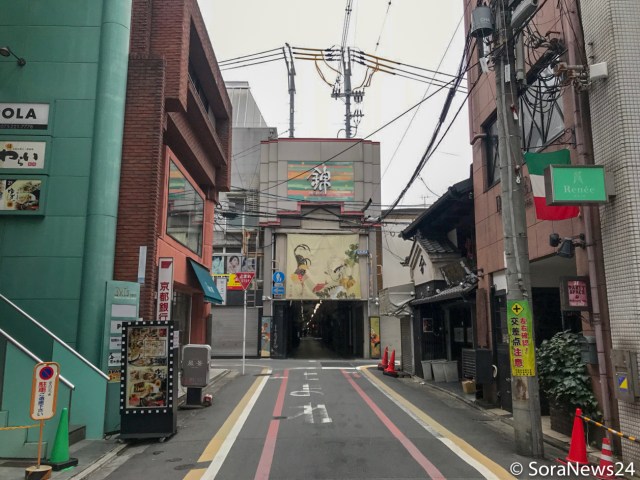
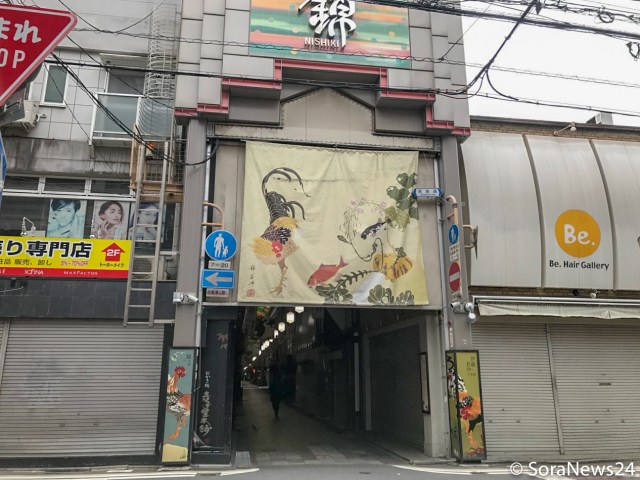
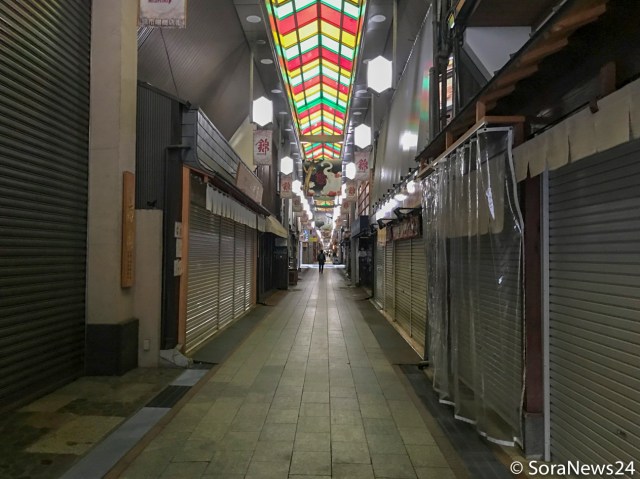
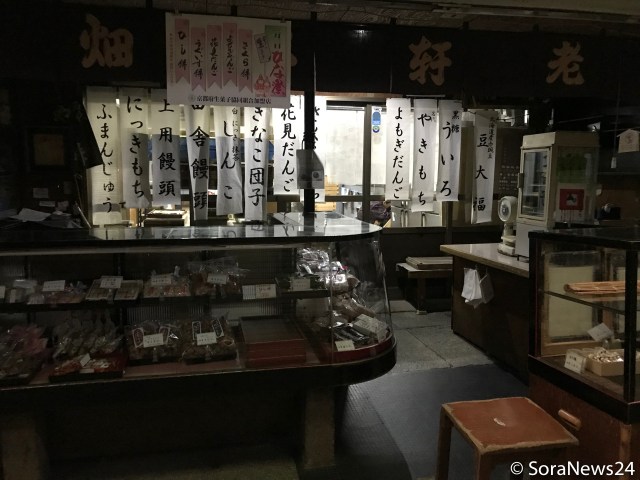
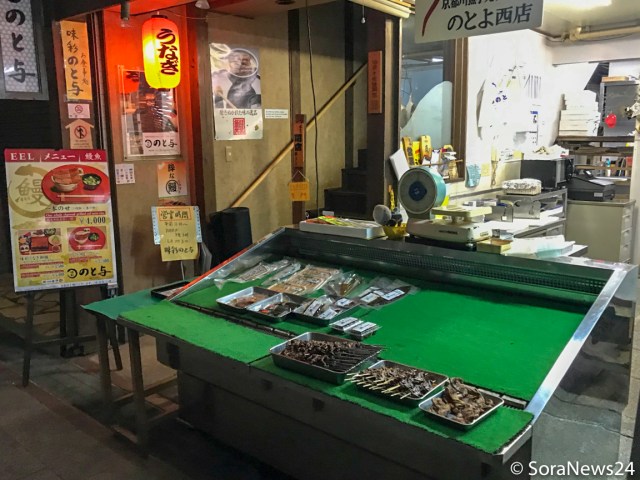
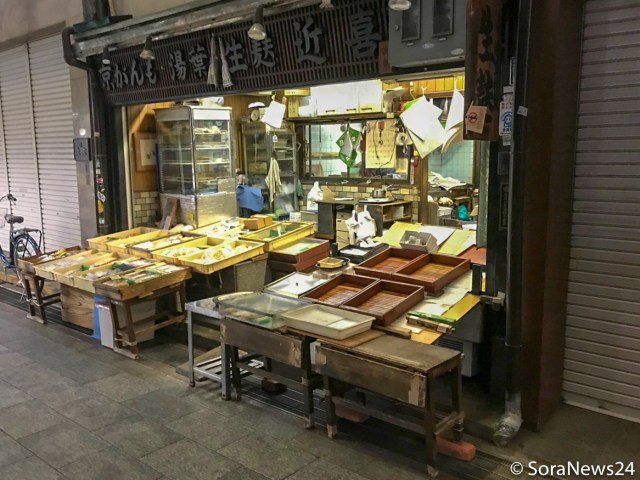
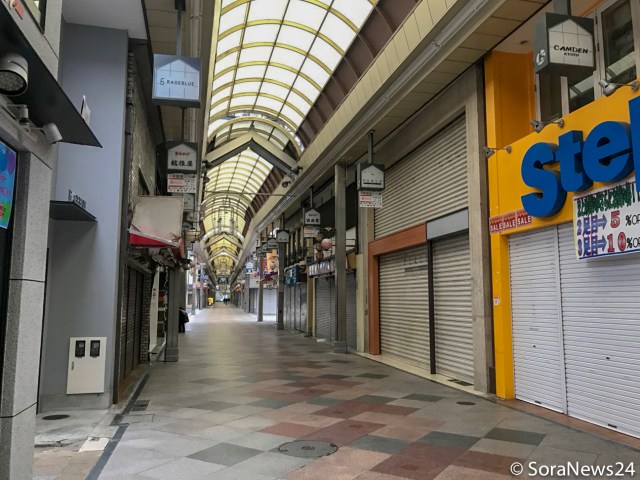
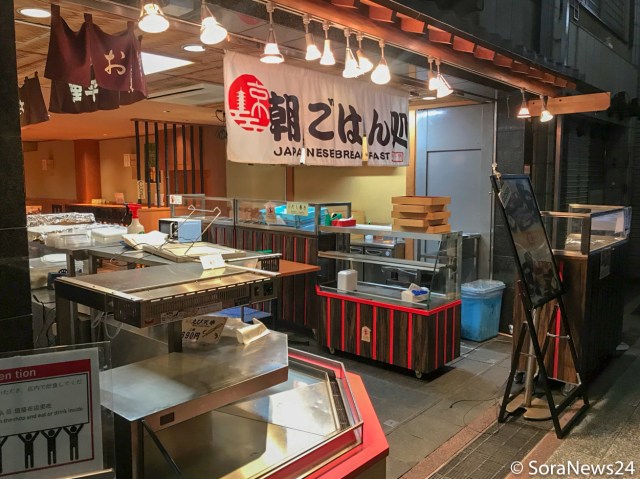
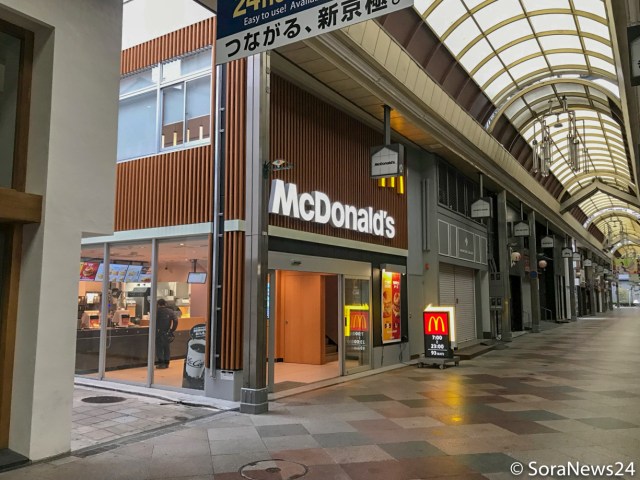
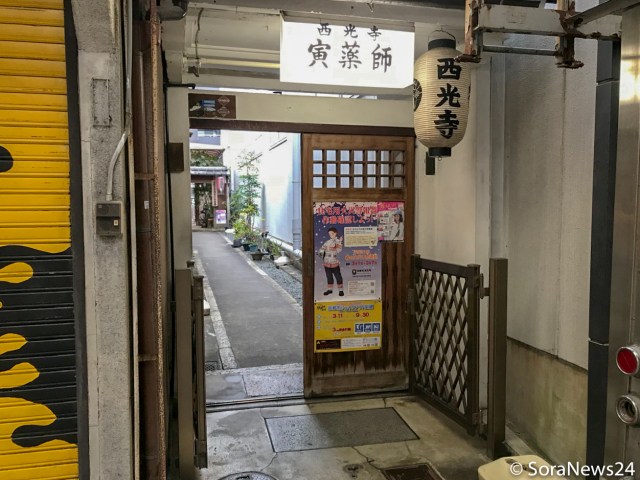
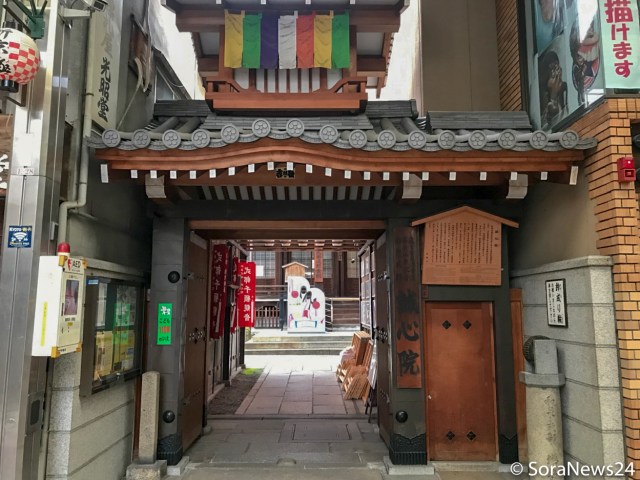
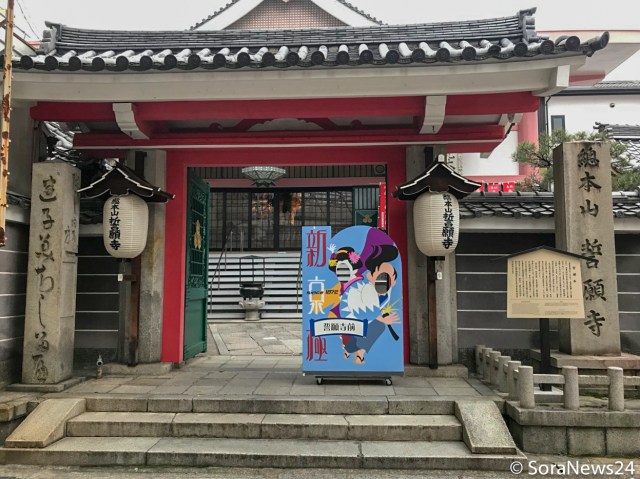
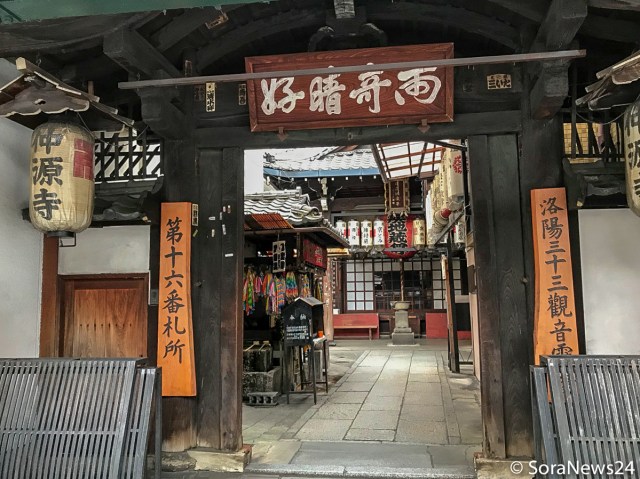
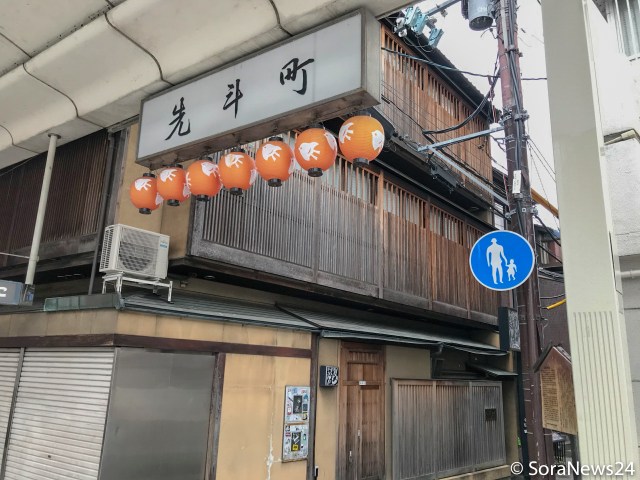
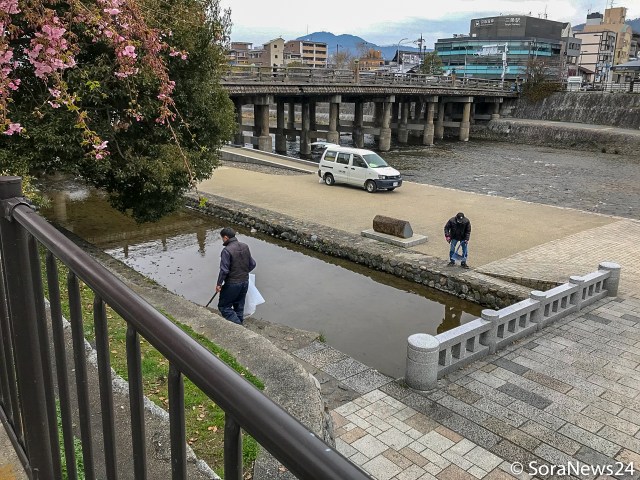
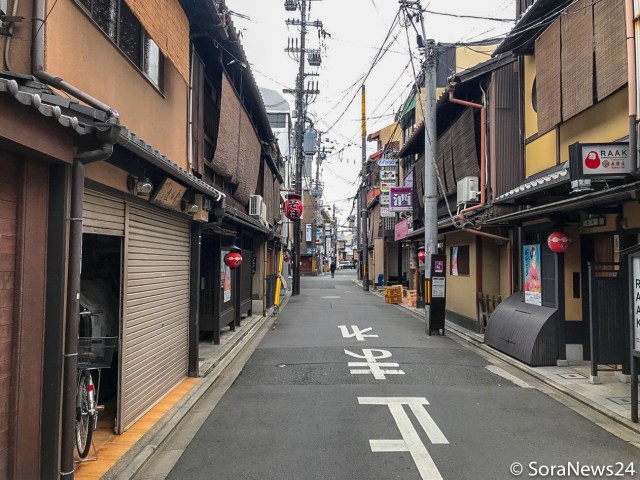
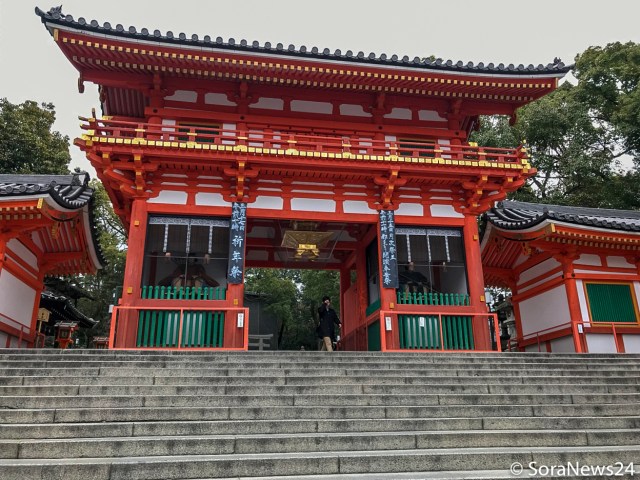
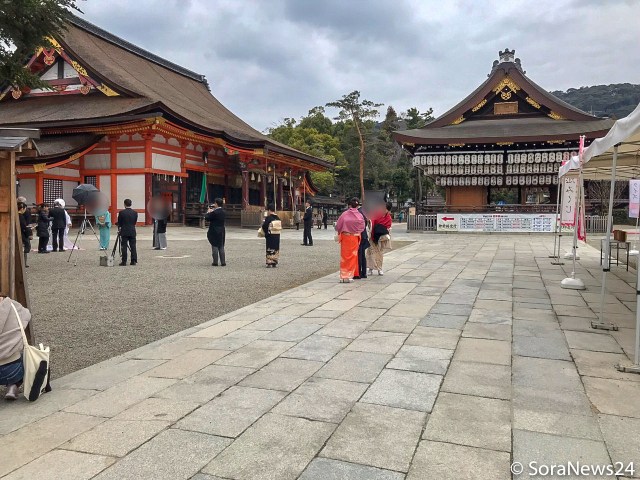
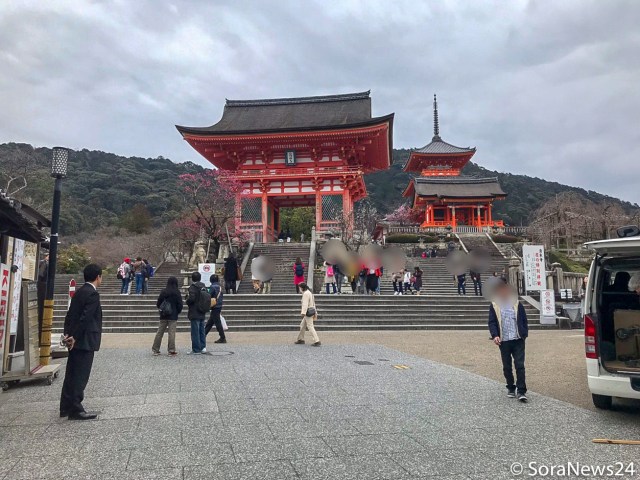
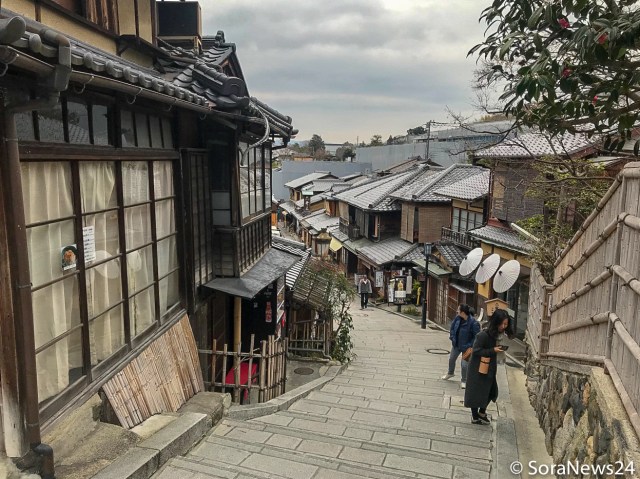
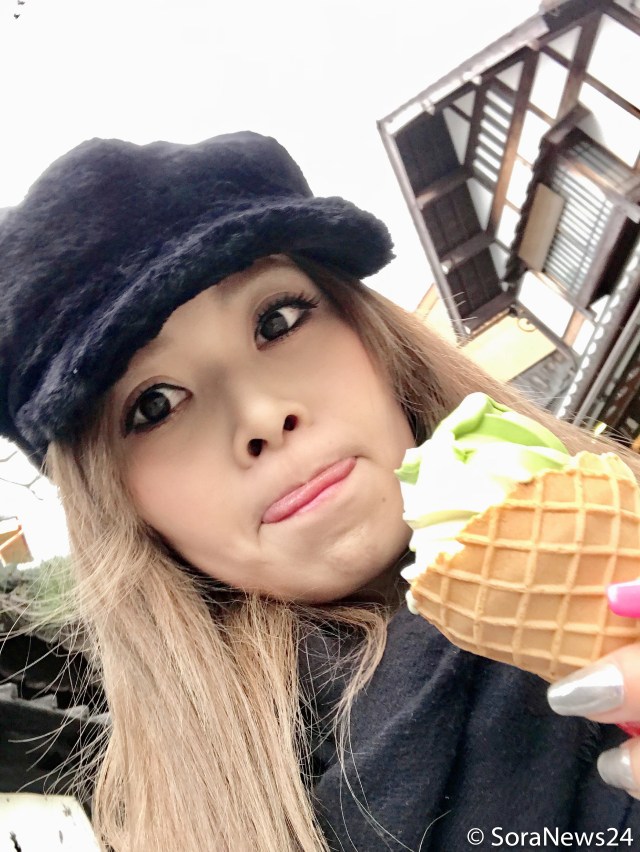
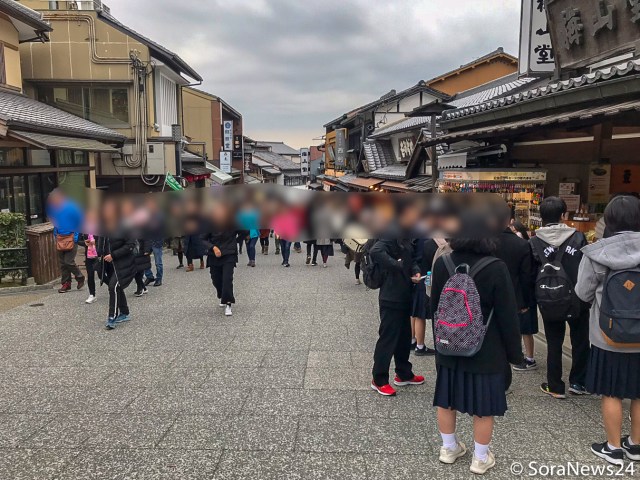
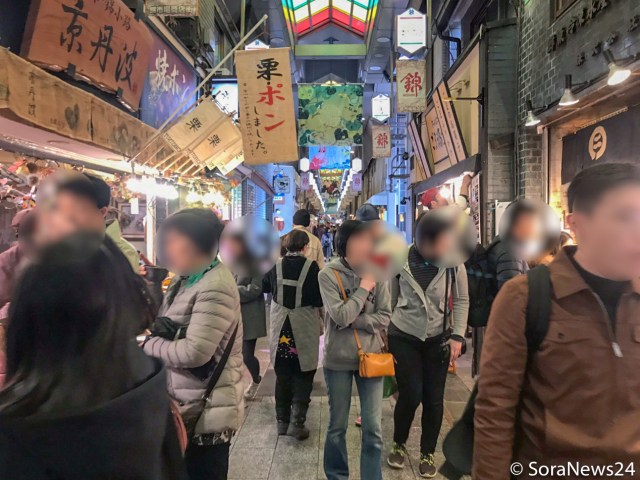
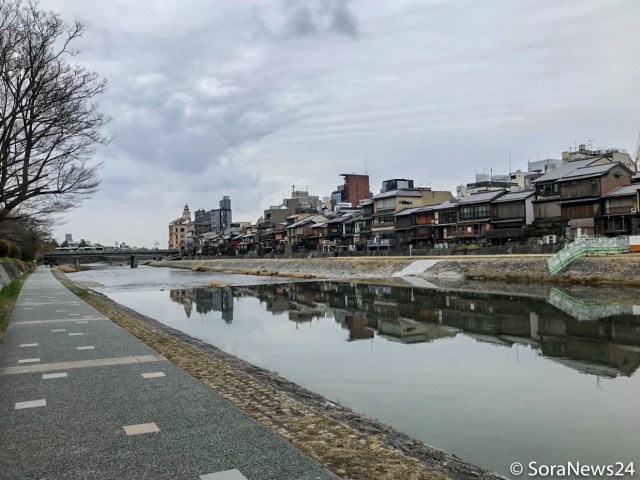
 We rode 11 hours on a sleeper train from Shanghai to Shenzhen and learned a valuable lesson
We rode 11 hours on a sleeper train from Shanghai to Shenzhen and learned a valuable lesson Hey, Thai tuk-tuk driver! Take us to the best Thai restaurant in this part of Bangkok!
Hey, Thai tuk-tuk driver! Take us to the best Thai restaurant in this part of Bangkok! What’s it like to watch a sumo tournament in Tokyo during the pandemic?
What’s it like to watch a sumo tournament in Tokyo during the pandemic? “Hey Singaporean taxi driver! Take us to the best restaurant in Singapore!”
“Hey Singaporean taxi driver! Take us to the best restaurant in Singapore!” McDonald’s breakfast menu in Hong Kong is like nothing we’ve ever seen in Japan
McDonald’s breakfast menu in Hong Kong is like nothing we’ve ever seen in Japan Foreigner’s request for help in Tokyo makes us sad for the state of society
Foreigner’s request for help in Tokyo makes us sad for the state of society Japanese-style accommodation at the new Premium Dormy Inn hotel in Asakusa will blow your mind
Japanese-style accommodation at the new Premium Dormy Inn hotel in Asakusa will blow your mind Mikado Coffee is a 76-year-old coffee chain with a major celebrity connection
Mikado Coffee is a 76-year-old coffee chain with a major celebrity connection Seaside scenery, history, and so many desserts on Yokohama’s Akai Kutsu【Japan Loop Buses】
Seaside scenery, history, and so many desserts on Yokohama’s Akai Kutsu【Japan Loop Buses】 Smash Bros. director Sakurai stabs Kirby in the face, has delicious justification for it
Smash Bros. director Sakurai stabs Kirby in the face, has delicious justification for it Japan’s summertime towelket pillowcases are even better with the addition of Ghibli stars【Photos】
Japan’s summertime towelket pillowcases are even better with the addition of Ghibli stars【Photos】 Red light district sushi restaurant in Tokyo shows us just how wrong we were about it
Red light district sushi restaurant in Tokyo shows us just how wrong we were about it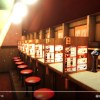 One of Japan’s best ramen chains now has a VR game that lets you cook their noodles【Video】
One of Japan’s best ramen chains now has a VR game that lets you cook their noodles【Video】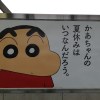 Anime’s rudest little boy, Crayon Shin-chan, helps pledge support for hardworking moms
Anime’s rudest little boy, Crayon Shin-chan, helps pledge support for hardworking moms Japan’s massive matcha parfait weighs 6 kilos, contains hidden surprises for anyone who eats it
Japan’s massive matcha parfait weighs 6 kilos, contains hidden surprises for anyone who eats it McDonald’s new Happy Meals offer up cute and practical Sanrio lifestyle goods
McDonald’s new Happy Meals offer up cute and practical Sanrio lifestyle goods Japanese ramen restaurants under pressure from new yen banknotes
Japanese ramen restaurants under pressure from new yen banknotes French Fries Bread in Tokyo’s Shibuya becomes a hit on social media
French Fries Bread in Tokyo’s Shibuya becomes a hit on social media New private rooms on Tokaido Shinkansen change the way we travel from Tokyo to Kyoto
New private rooms on Tokaido Shinkansen change the way we travel from Tokyo to Kyoto Tokyo Tsukiji fish market site to be redeveloped with 50,000-seat stadium, hotel, shopping center
Tokyo Tsukiji fish market site to be redeveloped with 50,000-seat stadium, hotel, shopping center Japanese city loses residents’ personal data, which was on paper being transported on a windy day
Japanese city loses residents’ personal data, which was on paper being transported on a windy day Beautiful Ghibli sealing wax kits let you create accessories and elegant letter decorations【Pics】
Beautiful Ghibli sealing wax kits let you create accessories and elegant letter decorations【Pics】 Secret Kitchen bento serves Japanese flowers, birds, wind and moon in a box, but is it worth it?
Secret Kitchen bento serves Japanese flowers, birds, wind and moon in a box, but is it worth it? New definition of “Japanese whiskey” goes into effect to prevent fakes from fooling overseas buyers
New definition of “Japanese whiskey” goes into effect to prevent fakes from fooling overseas buyers Our Japanese reporter visits Costco in the U.S., finds super American and very Japanese things
Our Japanese reporter visits Costco in the U.S., finds super American and very Japanese things Studio Ghibli releases Kiki’s Delivery Service chocolate cake pouches in Japan
Studio Ghibli releases Kiki’s Delivery Service chocolate cake pouches in Japan All-you-can-drink Starbucks and amazing views part of Tokyo’s new 170 meter-high sky lounge
All-you-can-drink Starbucks and amazing views part of Tokyo’s new 170 meter-high sky lounge More foreign tourists than ever before in history visited Japan last month
More foreign tourists than ever before in history visited Japan last month New Pokémon cakes let you eat your way through Pikachu and all the Eevee evolutions
New Pokémon cakes let you eat your way through Pikachu and all the Eevee evolutions Disney princesses get official manga makeovers for Manga Princess Cafe opening in Tokyo
Disney princesses get official manga makeovers for Manga Princess Cafe opening in Tokyo Sales of Japan’s most convenient train ticket/shopping payment cards suspended indefinitely
Sales of Japan’s most convenient train ticket/shopping payment cards suspended indefinitely Sold-out Studio Ghibli desktop humidifiers are back so Totoro can help you through the dry season
Sold-out Studio Ghibli desktop humidifiers are back so Totoro can help you through the dry season Japanese government to make first change to romanization spelling rules since the 1950s
Japanese government to make first change to romanization spelling rules since the 1950s Ghibli founders Toshio Suzuki and Hayao Miyazaki contribute to Japanese whisky Totoro label design
Ghibli founders Toshio Suzuki and Hayao Miyazaki contribute to Japanese whisky Totoro label design Doraemon found buried at sea as scene from 1993 anime becomes real life【Photos】
Doraemon found buried at sea as scene from 1993 anime becomes real life【Photos】 Tokyo’s most famous Starbucks is closed
Tokyo’s most famous Starbucks is closed One Piece characters’ nationalities revealed, but fans have mixed opinions
One Piece characters’ nationalities revealed, but fans have mixed opinions We asked a Uniqlo employee what four things we should buy and their suggestions didn’t disappoint
We asked a Uniqlo employee what four things we should buy and their suggestions didn’t disappoint We joined the 10,000 otaku who recently congregated in Madrid for Japan Weekend
We joined the 10,000 otaku who recently congregated in Madrid for Japan Weekend We visit a ramen bar in Croatia, meet a whole new version of ramen we can’t wait to make at home
We visit a ramen bar in Croatia, meet a whole new version of ramen we can’t wait to make at home We try a rotating sushi restaurant in New Delhi, are surprised to find no rotating sushi
We try a rotating sushi restaurant in New Delhi, are surprised to find no rotating sushi Japan’s big eats just got even bigger at this little-known cafe
Japan’s big eats just got even bigger at this little-known cafe Our Japanese reporter visits Czechia’s famous beer spas and boozily bathes in a bath of beer
Our Japanese reporter visits Czechia’s famous beer spas and boozily bathes in a bath of beer We stumbled upon “Pudding Street” in Hanoi, so of course we had to investigate
We stumbled upon “Pudding Street” in Hanoi, so of course we had to investigate We try European Cup Noodle Soba flavors to see which ones come out on top 【Taste test】
We try European Cup Noodle Soba flavors to see which ones come out on top 【Taste test】 We try Starbucks Japan’s new sand dunes Frappuccino in Tottori
We try Starbucks Japan’s new sand dunes Frappuccino in Tottori Ramen and girls bar: Where you can talk to women who aren’t dressed like hosts or maids
Ramen and girls bar: Where you can talk to women who aren’t dressed like hosts or maids The McDonald’s Hokkaido Salmon Burger is a sell-out hit…outside of Japan【Taste test】
The McDonald’s Hokkaido Salmon Burger is a sell-out hit…outside of Japan【Taste test】 How can you maximize the calories you burn singing karaoke?【Experiment】
How can you maximize the calories you burn singing karaoke?【Experiment】 We visit a restaurant called ‘Otaku’ in France, eat some otaku sushi
We visit a restaurant called ‘Otaku’ in France, eat some otaku sushi Our reporter orders food from Uber Eats, falls in love, learns that fate works in mysterious ways
Our reporter orders food from Uber Eats, falls in love, learns that fate works in mysterious ways We went out of our comfort zone and tried barbecued camel meat at a market in Morocco
We went out of our comfort zone and tried barbecued camel meat at a market in Morocco Hey, Croatian taxi driver! Take us to the restaurant with the best štrukli in Zagreb
Hey, Croatian taxi driver! Take us to the restaurant with the best štrukli in Zagreb
Leave a Reply